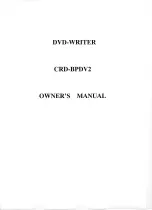
CHAPTER 3 - Installation of the drive
MANIU04.9607 GB 03/97
Page 3.12
3.3.9.2
The apparent power of the transformer or of the three-phase 380/220 autotransformer,
to which the BHL-D is connected, must be adequate to the loads supplied, taking into
account power factors and distortion factors.
3.3.9.3
Connections lines of the secondary of the transformer or autotransformer to terminal
boards N1A or N1B must correspond to what described in paragraph 4.4.1. The
connection between transformers/autotransformers of BHL-D and medium voltage
transformer of the industrial plant must be adequate to avoid voltage drops that can
throw supply voltage values out of contractual tolerance.
3.3.9.4
In some case low voltage phase adjustment systems of the supply net can create
problems, with possibility of resonances.
3.3.9.5
Study routes of the cables of the system accurately, minimizing length.
3.3.9.6
All metal raceways, metal shields and, in general, all shields, except otherwise stated,
must be connected to ground both cabin-side and motor-side; ground connoctions
must be of adequate section and very short.
This is an EMC specific requirement, which can apparently in contrast with what often
prescribed, i.e. the opportunity to connect shields to ground on one side only; this prescription
requires very efficient grounds.
3.4 External ballast resistors
When the ballast resistor is external, this must be assembled in an electric cabin because its
protection degree is IP00.
NOTE
For the external ballast resistor, the drive is completely protected from short
circuits between resistor terminals and between one terminal and the ground.
The resistor must be assembled in a vertical position and an open space must be provided for
of about 100 mm all around, to make adequate heat sinking possible. Please contact ABB
Servomotors for dimensions of resistors.
For the connection between the convertor and resistor, use cables at least equal to the
section of power supply cables; cables must be twisted and as short as possible. The route of
these cables must be chosen so that it does not interfere with other signal or power cables.
WARNING !
: The terminals of the ballast resistor are at dangerous dc electric
potentials (about 400V).
















































